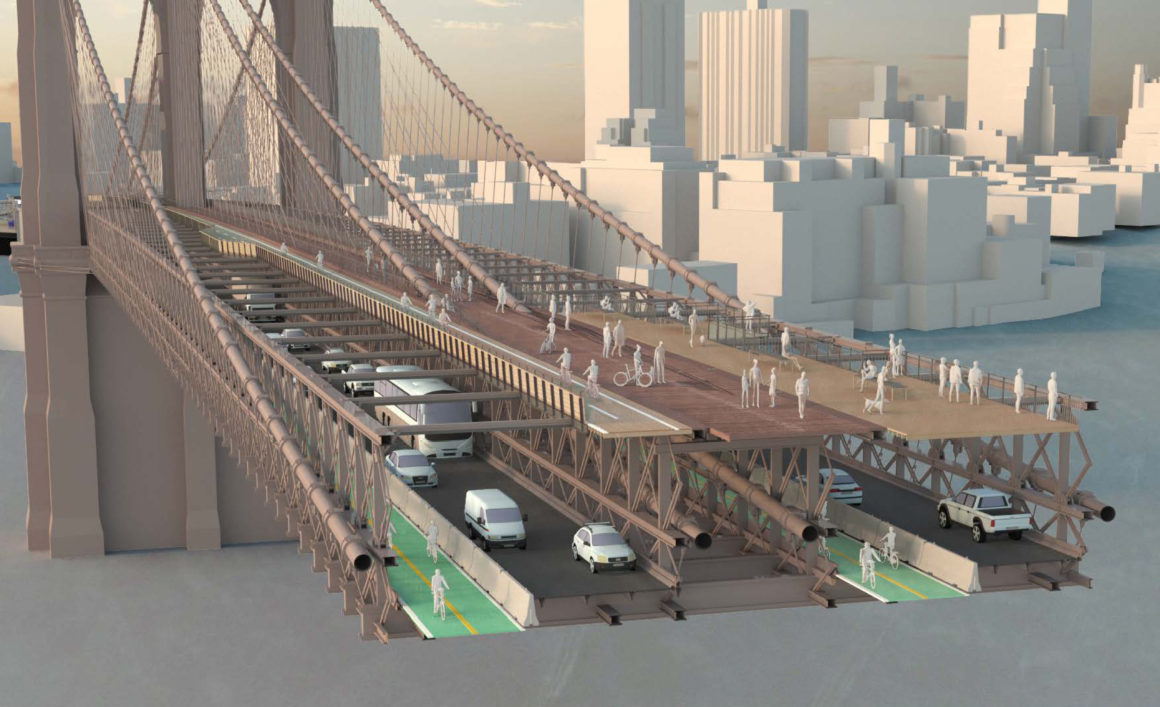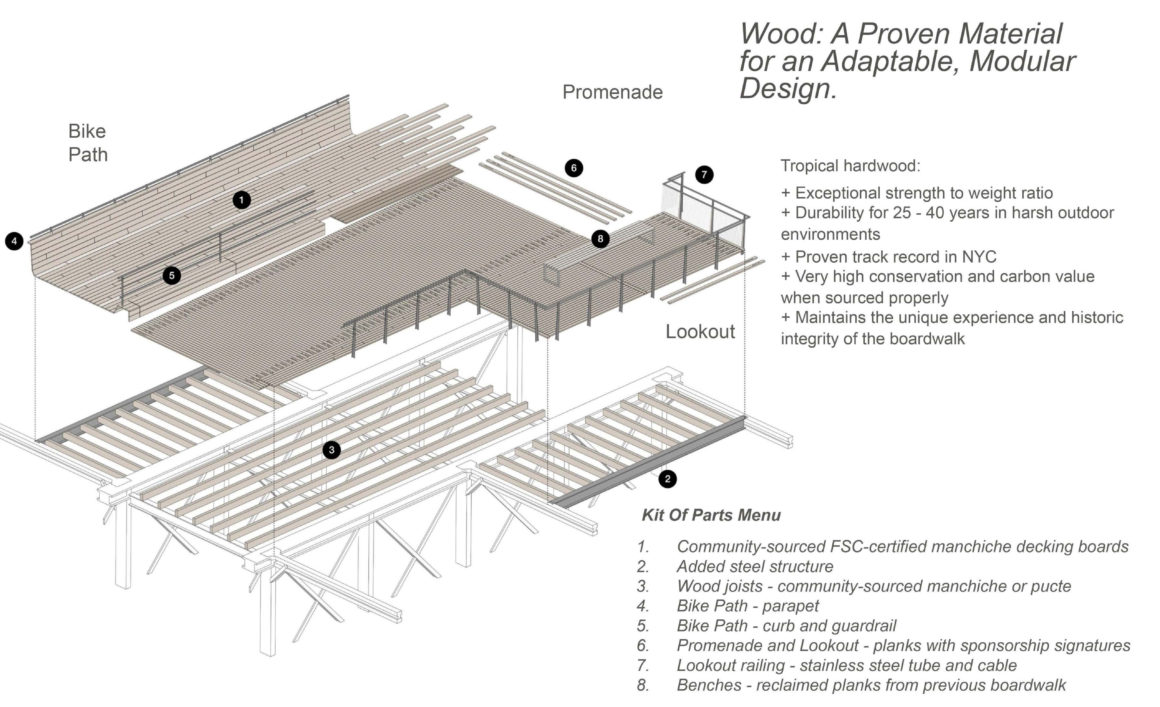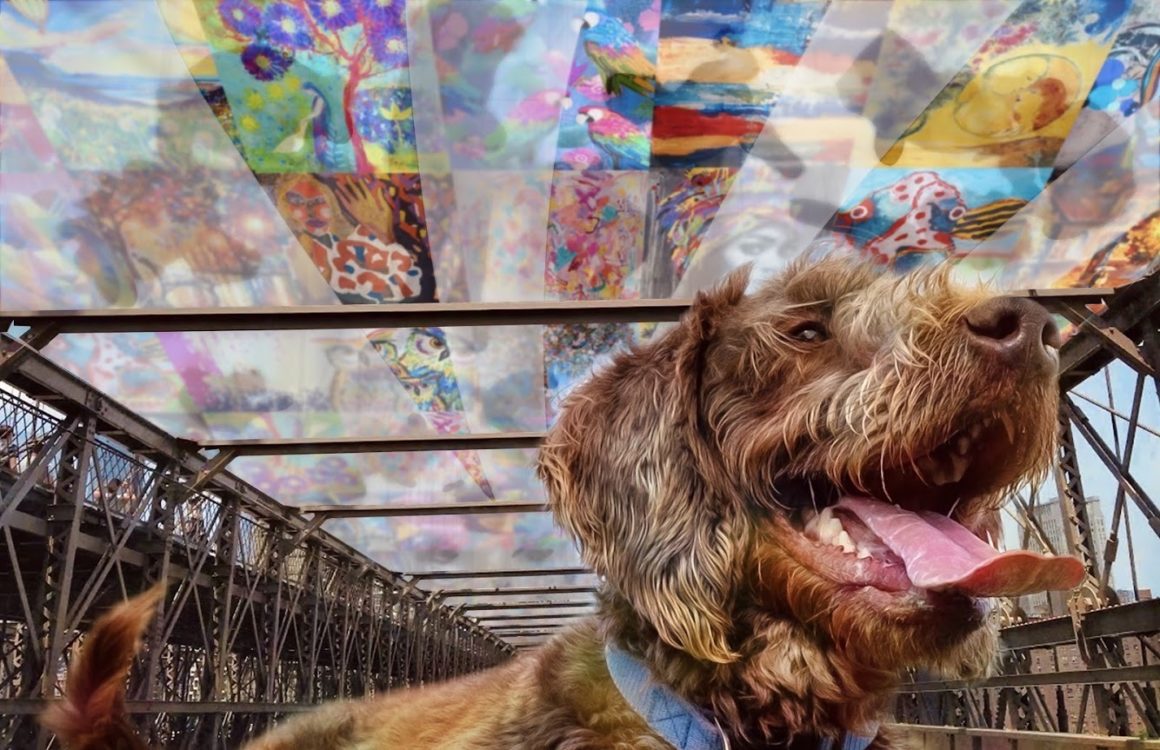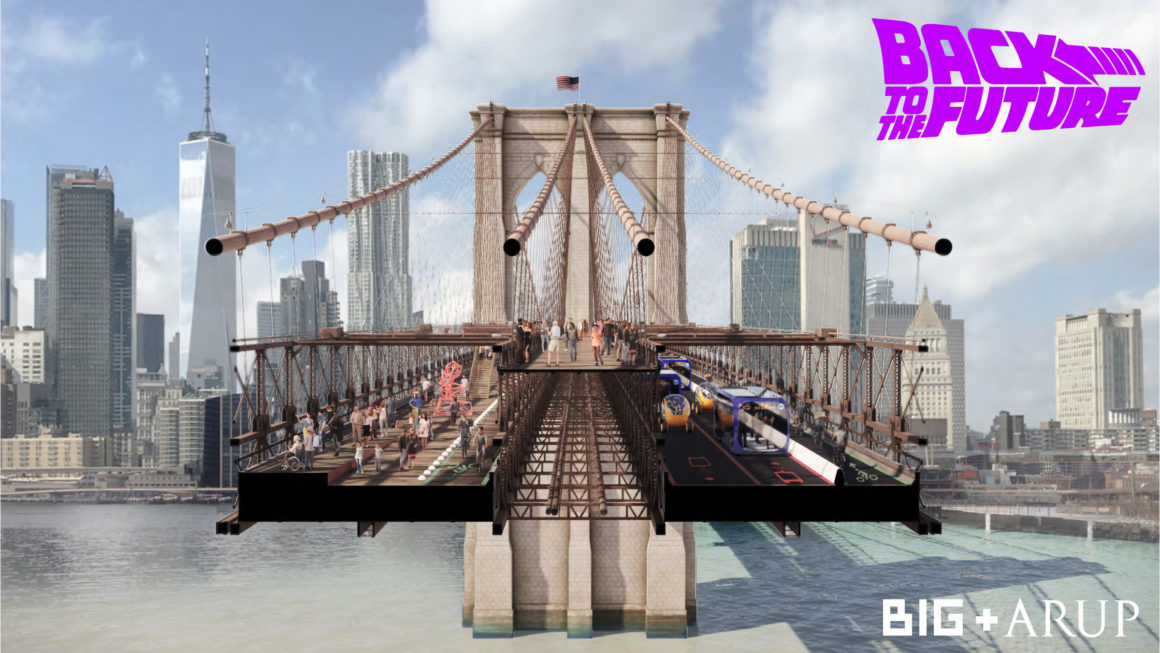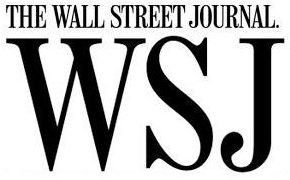The Brooklyn Bridge is one of New York’s most recognizable landmarks, and holds a special place in our collective imagination.
Since opening on May 24, 1883, the bridge has taken on near-mythic significance in New York City. Its striking form has captured the imagination of some of the nation’s most prominent artists. Its enduring iconographic power makes it one of the most photographed locations in New York. In popular culture, the bridge is a symbol for the city itself, used in countless establishing shots in films and television.
But that iconic status comes at a cost. Prior to the COVID-19 pandemic, at peak hours the promenade was crammed, uncomfortable, and sometimes unsafe. Thousands of pedestrians and cyclists crossed the bridge every day. In response to these conditions, the New York City Council and Van Alen Institute launched Reimagining Brooklyn Bridge, an international design competition that aims to spark a new public conversation about New York City’s infrastructure.
Overview
Reimagining Brooklyn Bridge challenged participants to rethink the iconic Brooklyn Bridge walkway. As made even more clear by the pandemic, the design of our streets and shared spaces must be responsive to the present moment and work to correct past injustices. They must foster equitable, accessible, and sustainable transportation options, create a healthy and safe environment for all New Yorkers, and opportunities for small businesses and vendors to flourish.
The Brooklyn Bridge has the potential to serve as a testing ground for designs that serve our communities in need — not just in an imagined, idealistic future — but now. With these considerations at heart, the six finalist proposals are a compelling and optimistic set of ideas for responsive short-term interventions and longer-term, large-scale reconfigurations of the Brooklyn Bridge.
The competition had two finalist categories:
- Professionals: Three finalists, 22 years of age and older. Each finalist will receive $13,000. Ultimately, one winner will be selected.
- Young Adults: Three finalists, 21 years of age or under. Each finalist will receive $3,000. Ultimately, one winner will be selected.
The competition’s finalists were selected by an interdisciplinary jury representing a wide-ranging set of perspectives on the Brooklyn Bridge. The jury considered the following factors: team composition; accessibility and safety; environmental benefit and security; respect for the bridge’s landmark status; feasibility; and “magic”—i.e. new ideas that surprise, delight, and fascinate.
Brooklyn Bridge Forest reimagines the bridge as an icon of climate action and social equity, improving mobility while respecting the landmark structure. The historic wooden walkway is expanded using planks sustainably sourced from a “partner forest” community in Guatemala that protects a 200,000-acre rainforest. A dedicated bike path and reclaimed traffic lane create new space for cyclists and low-carbon transit, while biodiverse “microforests” at either end of the bridge bring nature to New York City and serve as green spaces for underserved communities.
Project website: brooklynbridgeforest.com
Brooklyn Bridge Forest is a multidisciplinary team made up of architects, a landscape architect, an urbanist, two renowned ecologists, a structural engineer, a forester and environmental lawyer, educators and researchers, a community engagement facilitator—and all systems thinkers. The team’s collaborations span over a decade across multiple continents, with a shared mission to co-create a better world by synergizing the built and natural environment through design and culture change.
Scott Francisco; Dr. Sarah Jane Wilson; Christine Facella; Dr. Jeremy Radachowsky; Justin Den Herder, PE; Ben Fryer; Aaron Vaden-Youmans, Noah Garcia, Alexandre Rossignol, Arianne Pizem
Do Look Down’s installation of a glass surface above the bridge’s girders creates a whimsical new pedestrian space activated through art installations and seasonal programming. The lower roadway is converted into additional walkable and human-powered transport space that also offers opportunities for local vendors and performers. Powered by kinetic paving, an LED and projection system is mobilized to honor the city’s cultures, histories, and identities.
Born and raised in Hong Kong, Shannon Hui is a rising junior at Barnard College studying architecture and psychology.
A Bay Area native, Kwans Kim is a rising freshman at the NYU Gallatin School with interests in film, music, and television.
Also from the Bay, Yujin Kim completed his B.A. in Mathematics at Columbia University and is currently a PhD candidate at the Courant Institute of Mathematical Sciences, NYU.
Back to the Future seeks to return the bridge to its original state, both architecturally and functionally, and pilots innovations in autonomous mobility and public space design. By removing cars and related ramps, and providing more space for pedestrians, bikes and transit, this proposal moves more people and creates a stronger connection between Downtown Brooklyn, Lower Manhattan, and beyond.
Project video: Back to the Future
Bridge X proposes a Brooklyn Bridge that evolves in response to public feedback and adapts from a pandemic to a post-pandemic era. Through a phased approach, Bridge X reimagines the upper and lower decks to reclaim space for greater pedestrian and cyclist access, to make room for vendors and small businesses, and to offer new modes of engagement with the bridge. Digital tools and design interventions enable visitors to more easily access, explore, and reflect on their experiences of the bridge.
View full proposal (Google Slides)
Project website: bridgex.today
With sensitivity to different user groups, The Artery creates a contiguous modern transportation corridor between boroughs. On the bridge, the design incorporates designated spaces for vendors and three separate pathways for cyclists, runners, and pedestrians. The substantial incorporation of greenery provides natural borders between these paths, creating an improved experience while encouraging native plants and wildlife to inhabit the bridge.
Using a brightly colored path and cultural markers, The Cultural Current proposes a fluid integration of surrounding neighborhoods into a transportation and public space network that crosses the bridge. The proposal uses color in a playful way that’s also helpful for wayfinding, reuses existing wood boards and recycled plastic, and plans to phase car traffic off the lower roadway.
Jury
Peg Breen; President, New York Landmarks Conservancy
Andrew Brown; Associate Director of Research, Van Alen Institute
(non-voting)
Marla Gayle; Managing Director, SOM
Hon. Jonathan Gardenhire; Artist & District Leader, NYS Assembly District 65, Part B
Danny Harris; Executive Director, Transportation Alternatives
Helen Ho; Co-Founder, Biking Public Project
Isabella Joseph; Student, Bernard and Anne Spitzer School of Architecture, City College of New York
Regina Myer; President, Downtown Brooklyn Partnership
Amy Plitt; Writer and Editor
Resources



